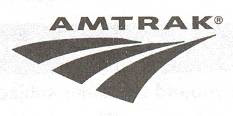
The Baltimore and Ohio Station
This station was built in 1842. It was actually a hotel owned by a private individual that had a shed for train passengers to use while waiting attached to it. It had a status in relationship to the B&O similar to the status enjoyed by the many taverns and inns found along the roads back then, and even today. That is to say, it was dependent upon the B&O for providing it with customers even though it did not belong to the B&O. This building is still the site of a train stop today. Amtrak train numbers 29 and 30, The Capitol Limited, stop here. In addition, at present, there are two MARC Commuter trains that leave from here for DC in the morning, and two MARC Commuter trains that arrive here from DC in the evening.
I say at present, because MARC has announced that due to reduced funds from the gasoline taxes, they are going to cut one in-bound and one out-bound train from Martinsburg WV. They will have a public hearing on this on the 24th of November. If you are interested, and are geographically able to attend, do so. The hearing will be from 6:00 PM to 9:00 PM at Martinsburg City Hall, J. Oakley Seibert City Council Chambers, 232 North Queen Street Martinsburg, WV 25401.
At any rate, to the best of my knowledge these train stops make this the oldest Train Station still in active use by Amtrak. Now the reality is that today a new re-modeled and expanded basement is the actual "station," and even it is really little more than a waiting room. But at least it is still a "station" in the broadest sense of the word.
Obviously, this station saw a lot of "action" during the Civil War. It is located just across the tracks from what was, at one time, one of the larger collection of railroad shops on the B&O. In late June, early July 1861, Confederate forces under the command of Thomas J. (soon to be called "Stonewall") Jackson occupied Martinsburg. While there they proceeded to attempt to completely destroy the B&O Railroad and deny its use to the Union forces. Towards that end, they destroyed or removed all pieces of rolling stock in the area. In addition, they took machines and machine tools from the shops, and burned the shop buildings to the ground. Finally, they also tore up most of the tracks in the area, and burned or otherwise attempted to destroy all the bridges nearby.
Some of the operating equipment Jackson seized at Martinsburg was moved over land, drawn on wagons by teams of horses, down the "old wagon road" (which became US 11 and later parts of I-81 down the Shennandoah Valley) to Strasburg VA. Here it was placed in use on the Manassas Gap Railroad. Less than a month later, Jackson and his men used this hi-jacked rail equipment to ride from the Valley over to Bull Run to participate in the battle called "Bull Run" by those loyal to the north, and "Manassas" by those loyal to the south (It all depends upon where your lines were located).
But Jackson did not let his men touch this station across the tracks from the shops. At that time, the state of Maryland (which had stayed with the Union) and the City of Baltimore were major stock-holders in the B&O. That fact made the B&O a function of the Union Government in Jackson's eyes. And thus, since his forces were operating against the forces loyal to the Union Government, that made the B&O, its tracks, equipment, and buildings, "Fair Game" for appropriation and/or destruction. Jackson reasoned, however, that this station was, in reality, a hotel owned by a private individual who was a resident in Martinsburg (and a potential loyal supporter of the secessionist cause). Thus, it was not "B&O" (i.e. Union government) property, but "private property." And so it was spared. (Note, the famous Belle Boyd, who later earned "fame" as a Confederate spy lived just around the corner from the station. Her house is still there and is open for tours.)



No comments:
Post a Comment